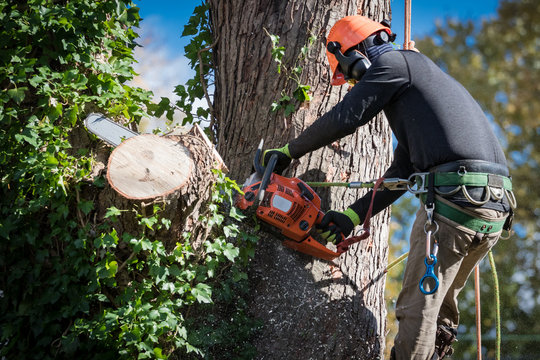Proper tree trimming is one of the most important practices for maintaining healthy, attractive trees on your property. Not only does trimming improve the appearance of your trees, but it also promotes better growth, prevents disease, and enhances the safety of your outdoor space. Knowing when, why, and how to trim trees correctly can make a huge difference in the health and longevity of your landscape.
The Importance of Tree Trimming
Tree trimming goes beyond just cutting back branches for aesthetic purposes. It serves multiple vital functions:
- Health: Removes dead, diseased, or insect-infested branches.
- Safety: Eliminates weak or overhanging limbs that could fall and cause damage.
- Growth Control: Shapes the tree structure and directs healthy growth.
- Sunlight & Airflow: Improves light penetration and air circulation within the canopy.
- Property Value: Well-maintained trees boost curb appeal and real estate value.
When is the Best Time for Tree Trimming?
Timing is crucial when it comes to tree trimming. Here’s a general guide:
- Late Winter to Early Spring: Ideal for most trees before new growth begins.
- Summer: Good for corrective pruning and controlling growth.
- Fall: Light trimming can be done, but avoid heavy cuts as trees prepare for dormancy.
- Avoid Spring Sap Flow: Some trees, like maple and birch, should not be pruned in early spring when sap is flowing heavily.
Essential Tree Trimming Tips for Homeowners
- Use the Right Tools
- Sharp, clean pruning shears for small branches.
- Loppers for medium-sized limbs.
- A pruning saw or pole saw for larger branches.
- Always sanitize tools before and after use to prevent disease spread.
- Follow the 3-Cut Method for Large Branches
- First cut: Underside notch to prevent bark tearing.
- Second cut: Outside the notch, further out, to remove the branch weight.
- Third cut: Clean up by cutting the remaining stub close to the trunk, just outside the branch collar.
- Know Which Branches to Trim
- Remove dead, damaged, or diseased branches first.
- Cut away crossing or rubbing branches.
- Trim weak branches with narrow crotches.
- Avoid “topping” (severely cutting back the crown), which harms tree health.
- Respect the Branch Collar
- The branch collar is the swollen area at the base of a branch.
- Cutting too close can damage the trunk; cutting too far leaves a stub prone to rot.
- Trim for Shape and Balance
- Maintain the natural shape of the tree.
- Balance the canopy by trimming overcrowded areas.
- Keep in mind the tree’s future growth to prevent over-pruning.
Common Tree Trimming Mistakes to Avoid
- Over-trimming: Removing too much foliage stresses the tree.
- Improper Cuts: Flush cuts or stubs can lead to decay.
- Topping Trees: Leads to weak, unsightly regrowth.
- Neglecting Safety: Always wear protective gear and avoid trimming near power lines.
- Wrong Timing: Pruning at the wrong time can make trees vulnerable to pests and disease.
DIY or Hire a Professional?
Small trimming tasks on accessible trees can be a DIY project. However, for large trees, high branches, or complex pruning jobs, hiring a professional arborist is the safest choice. Experts have the training, equipment, and knowledge to perform precise trimming without damaging the tree or risking injury.
Benefits of Professional Tree Trimming Services
- Expert assessment of tree health and structure.
- Safe removal of hazardous limbs.
- Proper pruning techniques for optimal growth.
- Cleanup and disposal of debris.
- Advice on long-term tree care and maintenance.
How Often Should You Trim Your Trees?
- Young Trees: Light trimming annually to shape growth.
- Mature Trees: Every 3-5 years, depending on species and health.
- Fruit Trees: Prune annually to promote better yields.
- Hazardous Situations: Trim immediately if branches pose a safety risk.
Final Thoughts
Mastering the art of tree trimming can significantly improve the health, appearance, and safety of your trees. While basic trimming can be handled by homeowners, complex or large-scale pruning is best left to professionals. Regular trimming not only protects your property but also adds value and beauty to your landscape.
By following these essential tips and seeking professional help when needed, you can shape and prune your trees like a pro, ensuring they thrive for years to come.





Comments